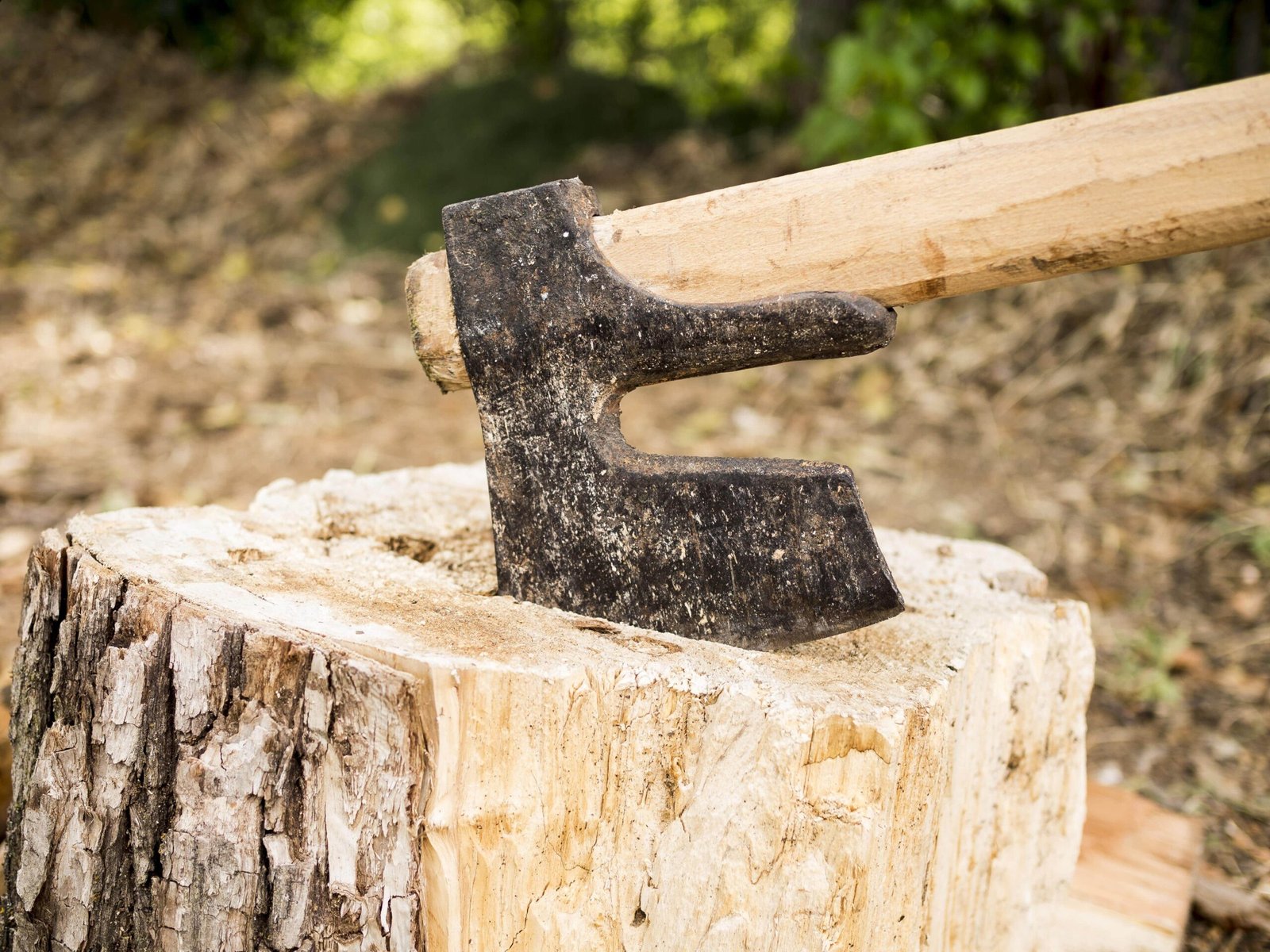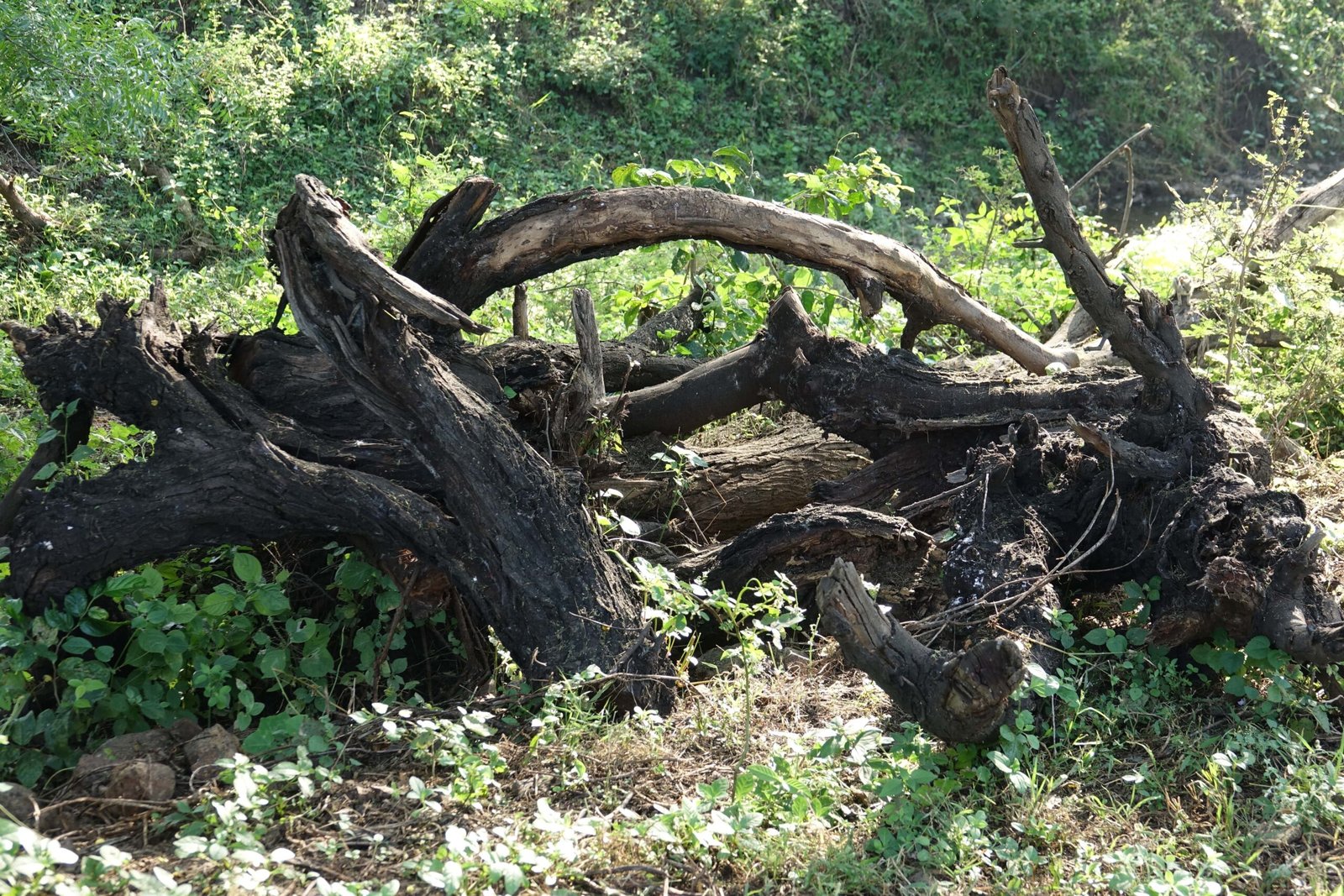Tree stumps are common for homeowners after cutting down a tree, but what happens next? You might not realize this, but leaving a tree stump can cause more damage than you think. Not only can it be an eyesore, but it can also attract pests, damage your lawnmower, and even hinder landscaping plans.
So, what do you do? Well, the good news is, you don’t have to live with a tree stump forever. Whether you want to burn, pull, or rot it away, there are a variety of methods to remove it.
In this guide, we’ll dive into the best tree stump removing methods, from easy DIY approaches to professional help. Let’s explore your options and find the right one for you!
What Are Tree Stumps and Why Should You Remove Them?
So, you’ve just chopped down a tree or maybe had one fall on your property. But now, you’re left with an eyesore, a big, stubborn tree stump sitting right in the way. Tree stumps might seem harmless at first, but they can cause a few issues if left unattended.
“A tree stump is simply the remaining base of a tree that’s been cut off, often leaving behind roots that can continue growing.”
Why should you remove a tree stump?
Well, for starters, they can be a tripping hazard. Imagine someone walking around your yard, and bam. They trip over the stump!
Not to mention, tree stumps can attract pests like termites, ants, and rodents, which might eventually make their way into your house.
Tools & Equipment You’ll Need for Stump Removal
Before diving into removing a tree stump, you’ll need to gather the right tools. Having the right equipment makes the process much easier. Here’s what you’ll need, whether you’re handling it yourself or bringing in some extra muscle:
- Stump Grinder – This is the go-to tool for many professionals. It grinds down the stump into mulch, getting rid of it quickly and efficiently.
- Chainsaw – For cutting off the bulk of the stump before you start grinding or pulling it out.
- Axe or Shovel – If you’re going the old-school route by hand, a shovel can help dig around the stump and loosen the soil. The axe is handy for cutting any leftover roots.
- Tree Stump Puller – This tool is perfect for pulling out the stump once you’ve loosened it up with a chainsaw or axe.
- Chemicals (Ammonium Nitrate) – For a more chemical method, ammonium nitrate helps break down the stump over time.
- Epsom Salt – You’ll see how this natural method works to decompose the stump, but you’ll need some patience with this one.
- Fire and Safety Gear – If you’re considering burning the stump, you’ll need fire-resistant gloves, a fire extinguisher, and possibly a drill to create holes in the stump to encourage the fire.
Once you’ve got your tools together, you’re ready to tackle the stump. Whether you’re renting a grinder or working with chemicals, having the proper tools ensures a smooth removal process.
Now, let’s explore the different methods you can use to remove that tree stump!
8 Tree Stump Removal Methods You Must Try
When it comes to removing a tree stump, there are several methods to consider, each with its own set of steps, pros, and cons.
Here’s a breakdown of the 8 most effective tree stump removal methods, explained step-by-step:
1. Using a Stump Grinder
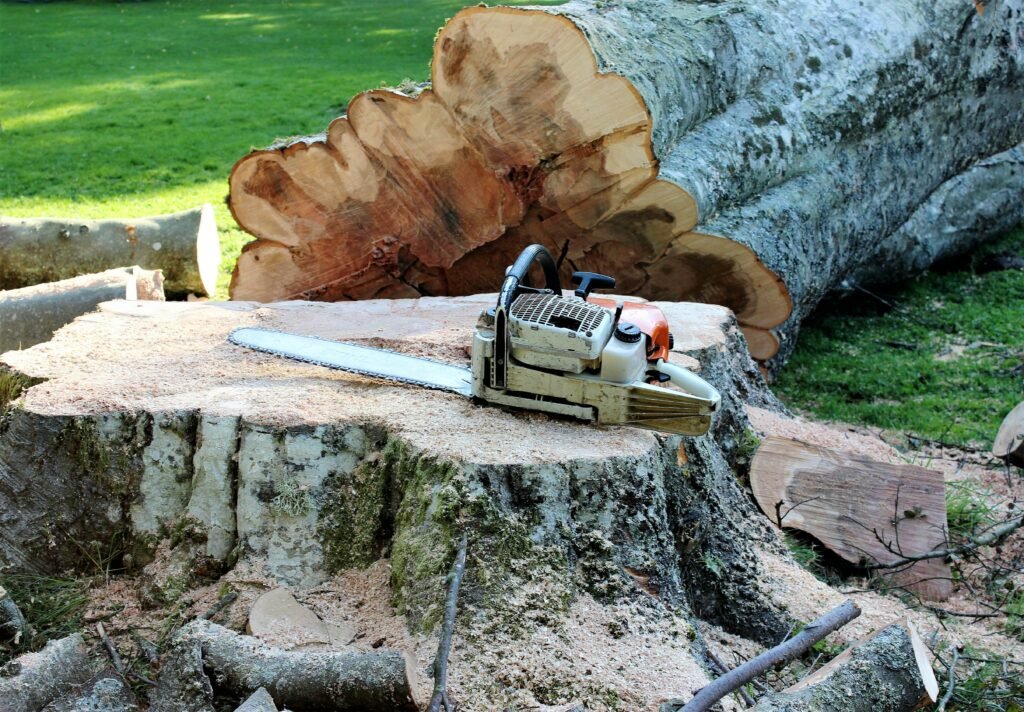
A stump grinder is one of the most efficient tools for removing tree stumps. It works by grinding down the stump below ground level, turning it into wood chips.
Steps:
- Step 1: Position the stump grinder over the stump. Ensure that the machine is stable and the blade is at the right height.
- Step 2: Turn on the grinder and lower the blade into the stump.
- Step 3: Gradually move the grinder back and forth across the stump to grind it down.
- Step 4: Continue grinding until the stump is level with the ground, and there’s nothing left but wood chips.
| Pros | Cons |
| Quick and efficient for large stumps | Expensive to rent or buy the machine |
| Can handle stumps of varying sizes | Requires proper training to use safely |
| Can remove the stump completely | Might leave roots behind |
2. By Hand
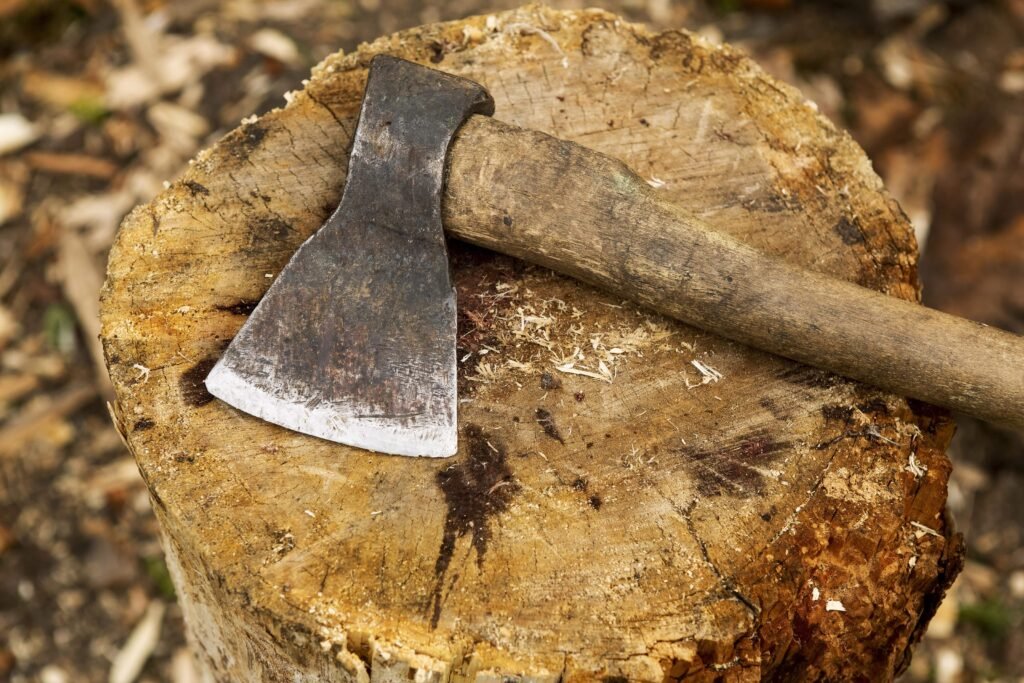
If you have a smaller stump or prefer a manual approach, removing the stump by hand can be a good option.
Steps:
- Step 1: Use a mattock or shovel to dig around the stump to expose the roots.
- Step 2: Sever the visible roots with your mattock or a small saw.
- Step 3: Dig deeper to expose the taproot and continue severing it.
- Step 4: Wiggle the stump out of the ground once the roots are severed
| Pros | Cons |
| Low-cost option (no machine required) | Time-consuming and labor-intensive |
| Works well for small stumps | Physical effort required |
| Can be a rewarding DIY project | May not work for large or deep stumps |
3. Chemicals (Ammonium Nitrate)
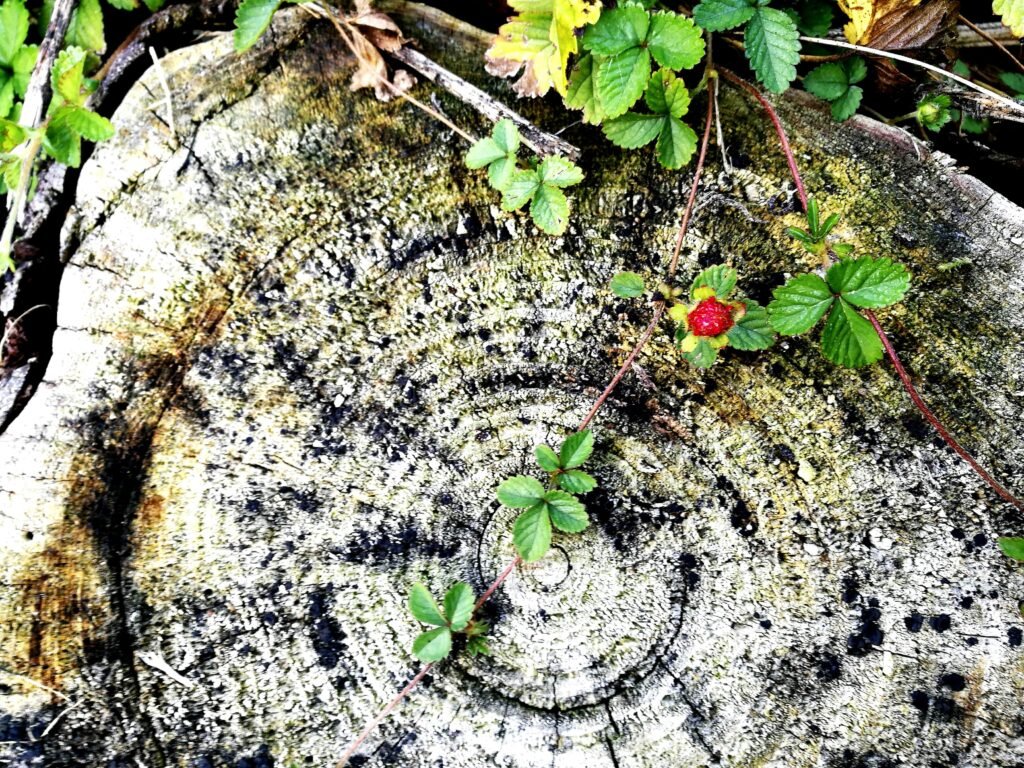
Using ammonium nitrate or other chemicals helps decompose the stump over time, making it easier to break down.
Steps:
- Step 1: Drill several holes into the stump using a drill bit (about 8-10 inches deep).
- Step 2: Pour ammonium nitrate or another stump remover into the holes.
- Step 3: Add water to activate the chemical reaction.
- Step 4: Wait several weeks for the stump to soften and decompose, making it easier to break apart.
| Pros | Cons |
| Inexpensive and minimal effort required | Takes a long time to work |
| Safe for the environment (if used correctly) | May not work well on large stumps |
| This can be done without heavy equipment | Requires patience and monitoring |
4. Burning Tree Stumps
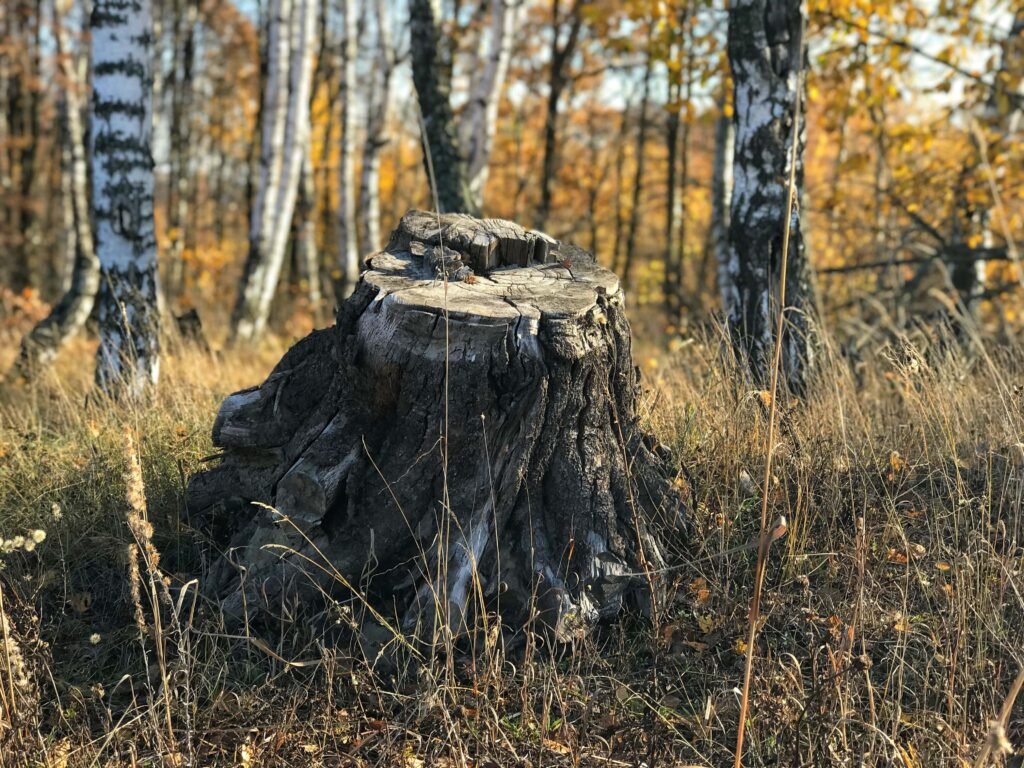
Burning the stump is a method that eliminates it through fire, turning the stump into ash.
Steps:
- Step 1: Drill several holes in the stump, around 8-10 inches deep.
- Step 2: Fill the holes with fuel, such as kerosene or other flammable liquid.
- Step 3: Light the fuel and let the stump burn. Keep an eye on the fire and ensure it’s under control.
- Step 4: Let the stump burn down completely, then remove the remaining ash.
| Pros | Cons |
| Fast removal, if done correctly | Risky and requires safety precautions |
| No need for heavy machinery | Not legal in some areas |
| Reduces the stump to ash | Can be difficult to manage large stumps |
5. Chainsaw
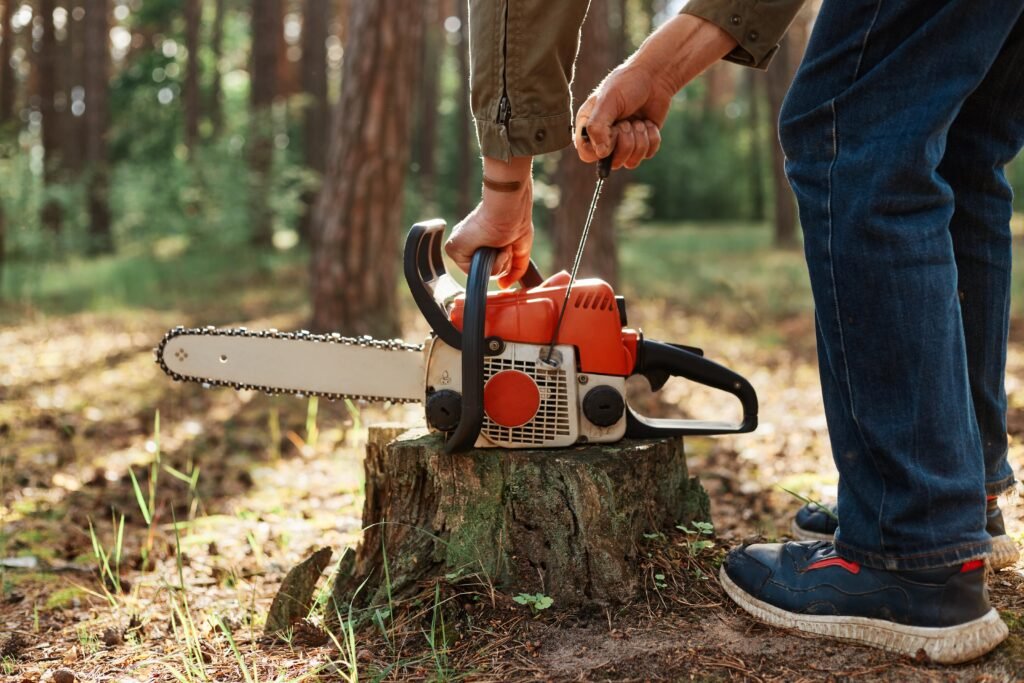
A chainsaw is an excellent tool for cutting down the top portion of a stump, though it won’t remove it completely.
Steps:
- Step 1: Use a chainsaw to cut the stump as low as possible.
- Step 2: Cut in a downward motion, making sure the chainsaw blade is perpendicular to the stump.
- Step 3: Continue cutting until the stump is level with the ground.
| Pros | Cons |
| Quick and effective for cutting down the top | Doesn’t fully remove the stump |
| Great for smaller to medium-sized stumps | Requires safety gear and experience |
| Suitable for stumps that aren’t too deep | Leaves behind roots and some remnants |
6. Epsom Salt
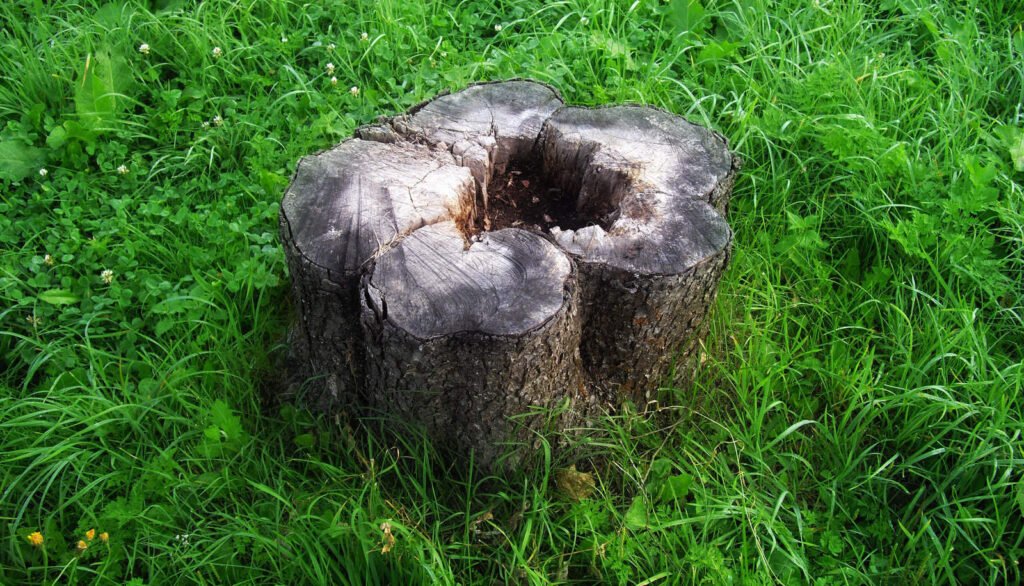
Epsom salt helps to accelerate the natural rotting process of a tree stump.
Steps:
- Step 1: Drill several holes into the stump, at least 8-10 inches deep.
- Step 2: Fill the holes with Epsom salt, ensuring they are filled.
- Step 3: Pour water into the holes to activate the salt.
- Step 4: Wait for the stump to soften over several months.
| Pros | Cons |
| Safe and eco-friendly | A slow process that requires patience |
| Inexpensive and easy to do | Takes months to fully decompose the stump |
| Doesn’t require heavy equipment | Works best on smaller stumps |
7. Rotting
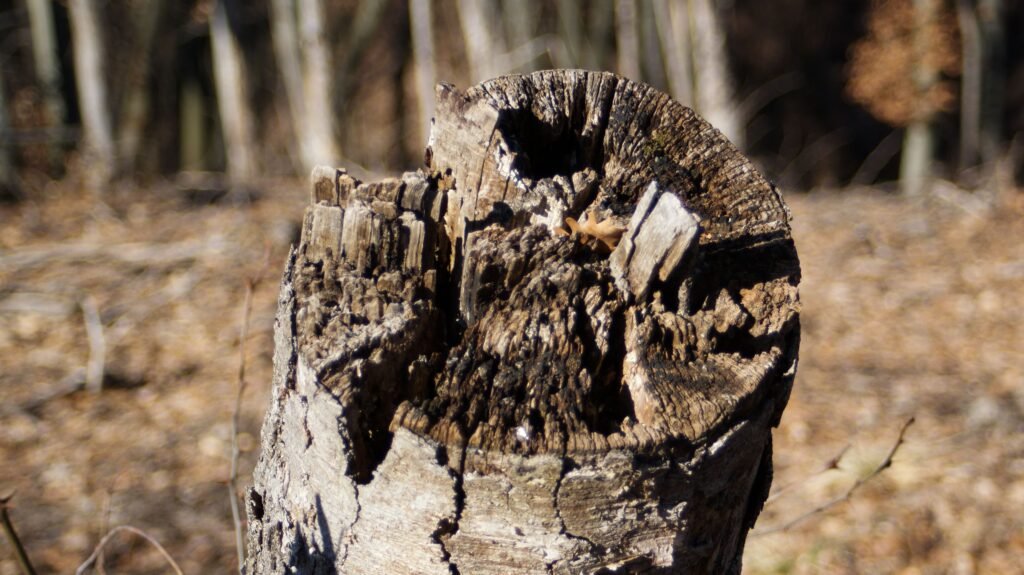
Letting the stump rot naturally is a simple method that doesn’t require much effort, but it can take a long time.
Steps:
- Step 1: Allow the stump to remain in the ground and wait for it to decompose over time.
- Step 2: Optionally, add a decomposing agent or fungi to speed up the process.
| Pros | Cons |
| No effort required | Extremely slow process |
| Free and natural process | The stump may remain for months or years |
| Environmentally friendly | May not fully break down the stump |
8. Tree Stump Puller
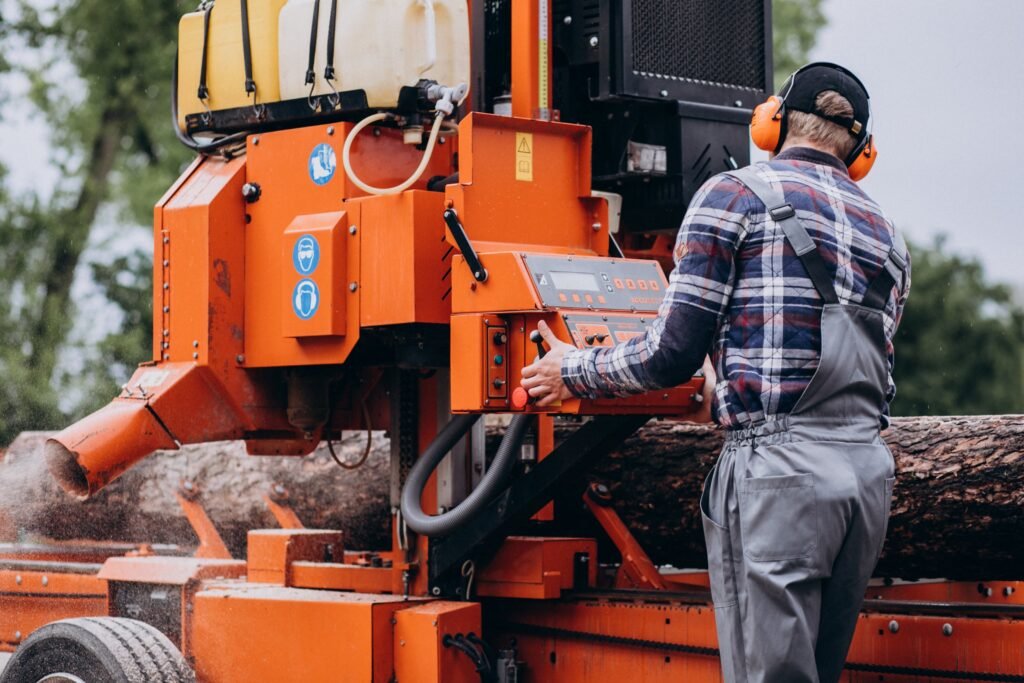
A tree stump puller is an effective way to yank out a stump by using leverage to pull it out of the ground.
Steps:
- Step 1: Position the puller around the base of the stump.
- Step 2: Use the lever mechanism to apply force and pull the stump out of the ground.
- Step 3: Continue applying pressure until the stump is fully removed.
| Pros | Cons |
| Works quickly for smaller to medium stumps | May not work for very large stumps |
| Easy to operate for most users | Requires a tree stump puller tool |
| Effective and minimal labor required | Doesn’t remove roots entirely |
These methods offer a variety of ways to tackle tree stump removal, from fast and professional solutions to DIY methods that can be done at home.
How Much Does It Cost to Remove a Stump?
The cost of tree stump removal can vary based on factors like the stump’s size, location, and removal method. Typically, homeowners can expect to pay between $180 and $525, with the average cost around $330.
The size of the stump is the biggest factor, with larger stumps costing more to remove. The method of removal also plays a big role in the price, grinding costs more, while chemical treatments are usually cheaper.
If you’re doing it yourself, the cost could be significantly lower, especially if you use methods like burning or Epsom salt. Although, for a professional job, the cost can vary depending on the area and complexity of the job.
Price Breakdown:
- Grinding: $200 – $500
- Chemical Removal (Epsom Salt/Ammonium Nitrate): $10 – $50 for DIY supplies
- Pulling by Hand: $100 – $250 (DIY)
- Burning: $50 – $200 for materials and supplies
Benefits of Removing a Tree Stump
Removing a tree stump might seem like an unnecessary task, especially if it’s located in a relatively obscure area.
However, getting rid of tree stumps provides several practical benefits that can improve the appearance, safety, and health of your property.
- Improved Aesthetics: A tree stump can be an eyesore in your yard. Removing it gives your landscape a cleaner and more polished appearance.
- Enhanced Safety: Stumps can be tripping hazards for children, pets, or even adults. Removing them improves the overall safety of your property.
- Prevention of Pests: Stumps that are left to decay can attract pests like termites, ants, and other insects. Removing the stump eliminates this breeding ground for pests.
- Prevent New Growth: Some trees may regrow from the stump, creating unwanted shoots or suckers. By removing the stump, you prevent this from happening.
- More Usable Yard Space: Once the stump is removed, you have additional space for new landscaping projects, making your yard more usable.
- Increases Property Value: A stump-free lawn is often seen as more well-maintained and inviting, which can help improve your property’s curb appeal. If you’re planning to sell, removing tree stumps can make your property more appealing to potential buyers.
When to Call Professionals like RV Tree Care?
While some tree stump removal methods can be done as DIY projects, calling in a professional is recommended in certain situations. If you’re dealing with a large, deeply rooted stump, or if you’re not sure which removal method is best.
A professional tree removal service can save you time, effort, and potential mishaps. Professionals like RV Tree Care are necessary to be saved from experiencing any accident.
FAQs
The circumference of a tree stump varies depending on the species and age of the tree. On average, it can range from 12 inches to 5 feet, with some giant tree stumps reaching over 10 feet in circumference.
While some trees, like willows or poplars, can regrow from the stump if the roots remain intact, most trees will not regenerate. However, tree sprouts (suckers) may appear, but these can be managed by removing them.
Tree stumps can be used creatively in your landscape. They can be transformed into unique seating, a birdbath, a planter, or even a natural sculpture. If you’re feeling crafty, you could repurpose the stump into a rustic table or stool.
The cheapest way is typically to use chemicals like Epsom salt or ammonium nitrate to rot the stump. If you have the time to wait, this method can cost less than hiring professionals or renting equipment.
No, in Animal Crossing, tree stumps do not grow back. Once a tree is chopped down and the stump remains, it will stay in place until you manually remove it. The stump won’t regenerate a new tree, so it’s up to you to clear it for a tidy yard.
Depending on the method used, stump removal can take anywhere from a few hours to a few days. Grinding the stump takes a few hours, while chemical methods or burning can take weeks to fully decompose the stump.

